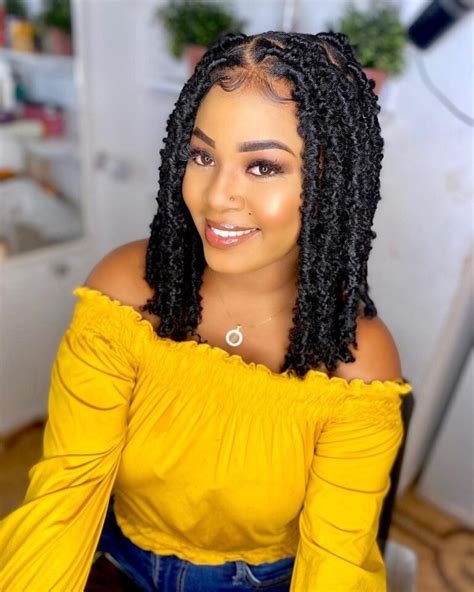Introduction

From ancient Egyptian queens to modern-day fashionistas, braids have captivated hearts for centuries. Their intricate patterns, versatility, and protective qualities have made them a timeless staple in haircare and style. In this comprehensive guide, we delve into the world of 30 braids, exploring their origins, types, benefits, tips, and tricks.
History of Braiding
The art of braiding dates back to prehistoric times, with evidence of its practice found in cave paintings and ancient artifacts. It is believed that the first braids were created for practical purposes, such as keeping hair out of the eyes and off the neck during hunting and other activities. Over time, braiding evolved into an elaborate form of personal expression and cultural identity.
Types of 30 Braids
The realm of 30 braids is vast and varied, with countless styles to choose from. Here are some of the most popular types:
- French Braid: Also known as the “three-strand braid,” this classic style involves crossing three strands of hair over each other in an intricate pattern.
- Dutch Braid: Similar to the French braid but with a tighter and more raised appearance, due to the strands being crossed under instead of over.
- Fishtail Braid: This whimsical braid resembles a fish’s tail, created by dividing hair into two sections and weaving small strands from each side over and under the other.
- Box Braids: A protective style where hair is sectioned into square or rectangular boxes and braided tightly against the scalp.
- Cornrows: These close-to-the-scalp braids are typically formed in straight lines or intricate patterns, with a raised effect due to the tight braiding.
- Waterfall Braid: A cascading braid that gives the illusion of water flowing through hair, created by releasing strands from the braid to create a waterfall effect.
- Halo Braid: As its name suggests, this braid forms a halo around the head, creating an ethereal and romantic look.
Benefits of 30 Braids
In addition to their aesthetic appeal, 30 braids offer a range of benefits:
- Protective: Braids help protect hair from damage caused by heat styling, sun exposure, and daily wear and tear. They reduce breakage and split ends, promoting hair growth.
- Versatile: Braids can be styled in countless ways, from sleek and sophisticated to playful and bohemian. They suit all hair types and lengths, making them universally flattering.
- Low Maintenance: Braids generally require minimal maintenance, making them ideal for busy lifestyles. They hold their shape for days or even weeks, reducing the need for frequent restyling.
- Time-Saving: Braiding can save significant time in haircare routines. Once a braid is done, it can be left in place for several days, eliminating the need for daily styling.
- Cultural Significance: Braids hold cultural significance in many communities around the world, representing identity, tradition, and social status.
Tips and Tricks for Braiding
- Practice Makes Perfect: The key to mastering braiding is practice. Start with simple styles and gradually work your way up to more complex ones.
- Use Hairspray: A light spray of hairspray can help hold braids securely in place throughout the day or night.
- Detangle Hair Thoroughly: Before braiding, make sure to detangle your hair thoroughly to avoid knots and tangles.
- Section Hair: Dividing hair into sections can make braiding much easier and help create a more polished look.
- Keep it Tight: The tighter you braid your hair, the longer it will hold its shape. However, be careful not to braid too tightly, as this can cause discomfort or damage.
Why 30 Braids Matter
30 braids matter because they:
- Enhance Personal Style: Braids can transform a simple look into a statement-making one, adding a touch of elegance, sophistication, or whimsy.
- Promote Hair Health: By protecting hair from damage and reducing breakage, braids contribute to healthy and lustrous tresses.
- Empower Self-Expression: Braids are an empowering form of self-expression, allowing individuals to showcase their creativity and cultural heritage.
- Create a Sense of Community: Braiding can be a social activity, bringing people together to share skills and celebrate culture.
- Inspire Innovation: The versatility of braids has inspired countless designers and haircare professionals to create new and innovative hairstyles.
Conclusion
From practical beginnings to modern-day fashion trends, 30 braids have stood the test of time as a beloved form of haircare and style. With their protective qualities, versatility, and timeless appeal, braids continue to captivate hearts and empower individuals. Whether you’re looking to enhance your personal style, protect your hair, or simply express your creativity, 30 braids offer endless possibilities. Embrace the art of braiding and unlock the beauty and benefits it has to offer.
Additional Information
Tables
| Table 1: Types of 30 Braids |
|---|
| French Braid |
| Dutch Braid |
| Fishtail Braid |
| Box Braids |
| Cornrows |
| Waterfall Braid |
| Halo Braid |
| Table 2: Benefits of 30 Braids |
|---|
| Protective |
| Versatile |
| Low Maintenance |
| Time-Saving |
| Cultural Significance |
| Table 3: Tips for Braiding |
|---|
| Practice Makes Perfect |
| Use Hairspray |
| Detangle Hair Thoroughly |
| Section Hair |
| Keep it Tight |
| Table 4: Why 30 Braids Matter |
|---|
| Enhance Personal Style |
| Promote Hair Health |
| Empower Self-Expression |
| Create a Sense of Community |
| Inspire Innovation |
Quotes
“Braids are a timeless form of hair art that can transform a look and express a myriad of emotions.” – Celebrity hairstylist Jen Atkin
“The protective qualities of braids are essential for maintaining healthy hair, especially for those who are transitioning to natural styles.” – Hairstylist and YouTube creator Naptural85
“Braiding is more than just a hairstyle; it’s a cultural tradition that connects people and celebrates diversity.” – Anthropologist and author Dr. Sidney Mintz
Additional Keywords
- Hair Braiding
- Hair Health
- Hairstyles
- Cultural Identity
- Self-Expression
